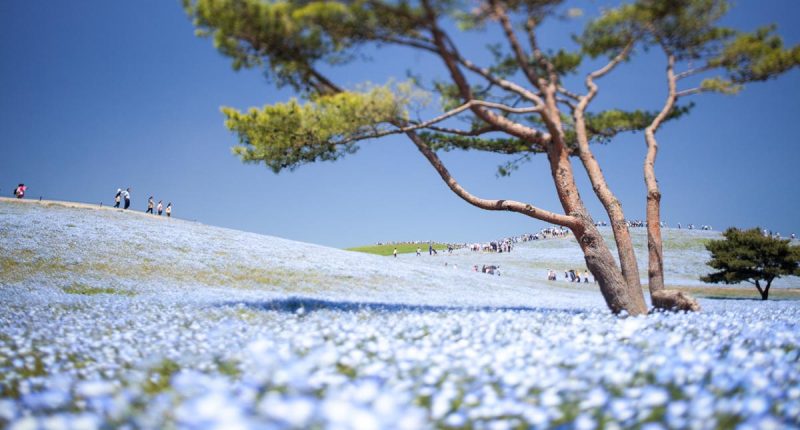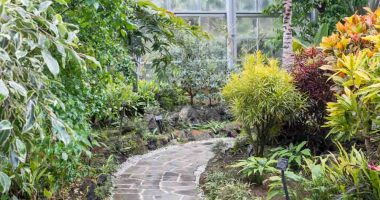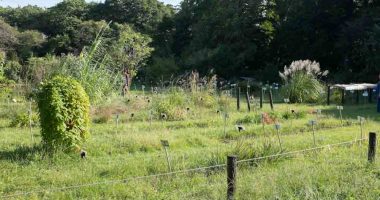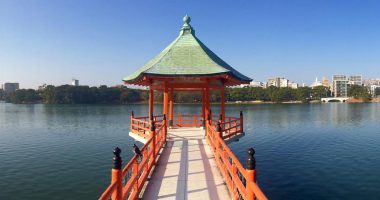Hitachi Seaside Park (ひたち海浜公園, Hitachi Kaihin Kōen) is 470 acres of parkland on the coast of Ibaraki that is most famous for the Nemophila Harmony festival in late April to mid May when the blooming of 4.5 million blue nemophila flowers attract thousands of visitors. Miharashi Hill on the east side of the park provides excellent views over the park, as well as of the coastline which is just a few hundred meters away.
Other nature festivals during the year include “Suisen Fantasy” when one million narcissuses (daffodils) of over 600 species coming into bloom (late March to mid April), and Kochia Carnival in from late September until mid October when the park turns red with kochias (summer cypress).
The vast park area also includes a forested area, herb garden, and dune garden with plants native to the coastlines of Japan. Near the entrance you will also find a small amusement park, BMX track, putter golf section, cycling center, and a BBQ area. See here for an English guide map.





